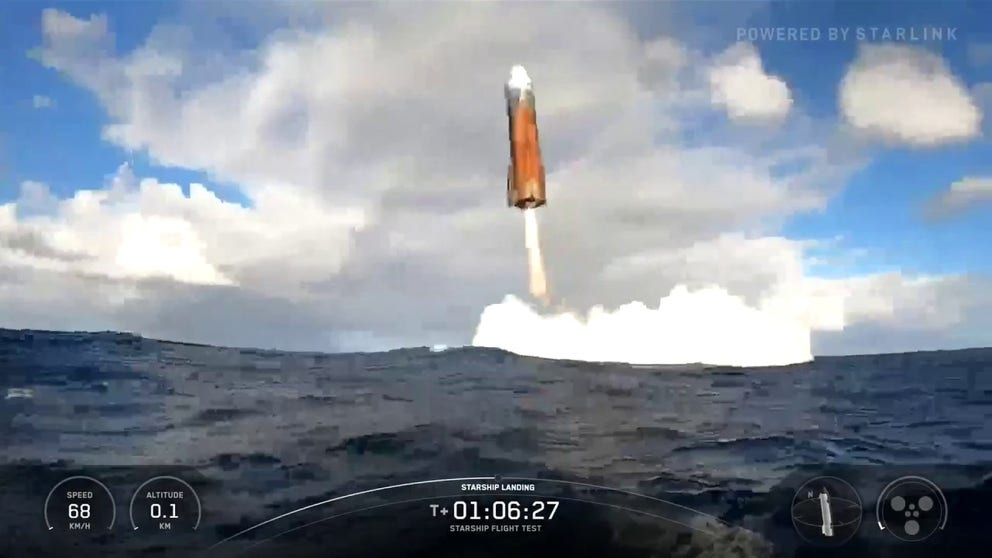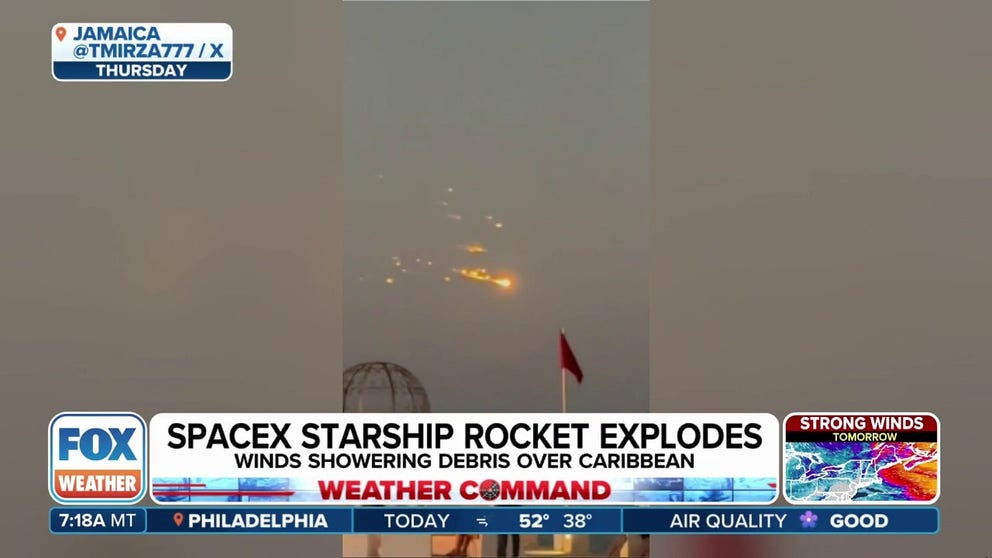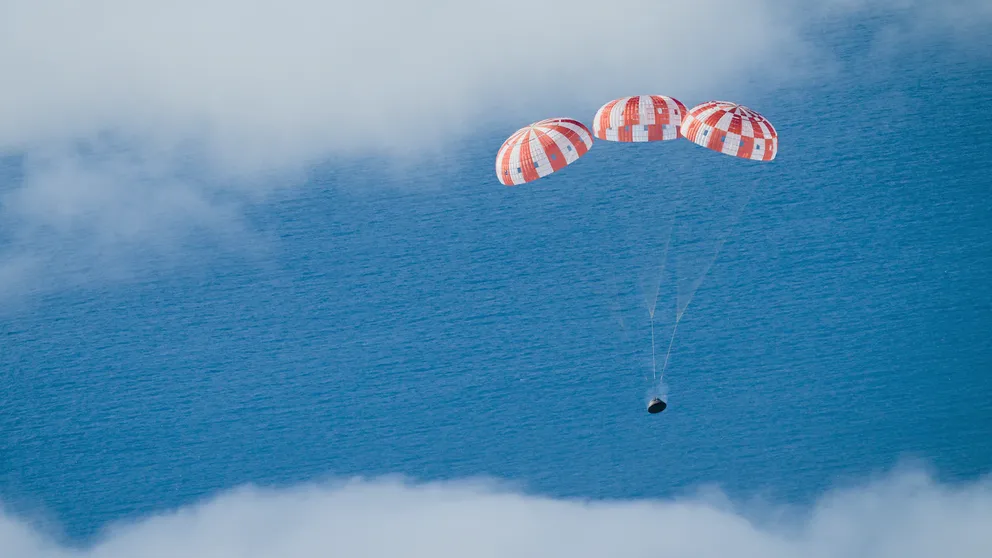SpaceX’s megarocket completes first test flight after years of explosive failures
The next Artemis mission is expected to be a crewed flight, but it will not involve SpaceX’s Starship. The spacecraft is not expected to be employed since at least Artemis III.
Watch: SpaceX rocket splashdown in Indian Ocean
SpaceX’s Starship rocket successfully launched and splashed down for the first time in two years, with its booster landing in the Gulf of America and the spacecraft splashing down in the Indian Ocean.
BOCA CHICA, Texas – For the first time in two years, SpaceX successfully launched and landed its powerful Starship rocket, marking a significant milestone for the private space company’s ambitions of space exploration.
The roughly 400-foot-tall rocket lifted off around 6:30 p.m. local time on Tuesday from the company’s South Texas launch site along the Gulf Coast.
Minutes later, the rocket’s massive booster separated and descended into the Gulf of America, while the spacecraft continued on a brief rendezvous with outer space.
The Starship deployed dummy satellites before splashing down in the Indian Ocean, and the entire event was captured on video.
Employees at SpaceX’s mission control could be heard over a livestream cheering for the achievement, which served as a sharp contrast to recent attempts that ended in explosions.
FUTURE OF NASA’S MEGA MOON ROCKET APPEARS IN DOUBT FOLLOWING MAJOR BOEING ANNOUNCEMENT
SpaceX starship explodes due to ‘major anomaly’ during fire test in Texas
A routine test led to fireworks on Wednesday night, when a SpaceX Starship exploded on the launch pad in Starbase, Texas.
The mission was deemed a success even with the company pushing the Starship to its limits in order to document weaknesses with the craft.
"Congratulations to the entire SpaceX team on an exciting tenth flight test of Starship," staff at SpaceX posted on X following the mission.
Starship is being developed with the ultimate goal of carrying astronauts to the Moon and eventually Mars.
While the company has not announced a firm timeline for human spaceflight exploration aboard Starship, the program is considered to be an important part of NASA’s Artemis lunar program.
The space agency had previously announced plans to use a modified version of SpaceX's Starship, starting with the Artemis 3 mission, which could launch as early as 2027.
SpaceX Starship Rocket Explodes
SPACEX’s eighth test launch of its Starship mega-rocket from Texas on Thursday evening ended in a disintegration of the Starship vehicle which caused ground stops in airports across Florida as they tried to literally avoid fallout. FOX News Correspondent Jonathan Serrie has the details.
DEBRIS FROM SPACEX ROCKET LAUNCH REPORTEDLY WASHING ASHORE ON MEXICAN BEACHES
NASA’s first Artemis mission, launched in November 2022, used the Orion spacecraft and Boeing’s Space Launch System rocket during an uncrewed journey around the Moon.
Delays with Starship’s development have raised concerns about the ambitious schedule of human exploration of the Moon.
Similarly, the SLS and Orion spacecraft have faced scrutiny over developmental delays and rising costs, with Boeing cutting hundreds of workers tied to the megamoon rocket earlier this year.
Despite Tuesday’s apparent successful mission, significant testing remains before Starship will be certified for human space travel, leaving just three types of spacecraft currently available for use in the United States.
Artemis 1 mission: Relive Orion’s historic journey to the moon and back to pave way for future astronaut missions
On December 11, the successful splashdown of the Orion spacecraft in the Pacific Ocean marked the end of the Artemis 1 mission.



